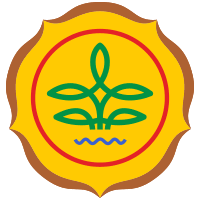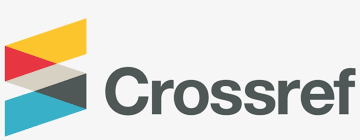Application of Kirinyuh Extracts (Chromolaena odorata (L.) R.M. King and H.E. Rob.) to Germination and Growth of Jawan Grass Weed (Echinochloa cruss-galli)
Abstract
Keywords
Full Text:
PDFReferences
Afolabi CA, Ibukun EO, Afor E, Obuotor EM, and Farombi EO.(2007). Phytochemical consituent and antioxidant activity of extracts from the leaves of Ocimun gratissimum. Sci. Res. Essaysm 2(5):163-166
Einhellig FA. 1996. Allelopathy: Current Status and Future Goals. In Inderjit, Dakhsini KMM, Einhellig FA (eds). Allelopathy, Organism, Processes and Applications. Washington DC: American Chemical Society.
Hadi M, Hidayat JW, dan Baskoro K. 2000. Uji potensi ekstrak daun Eupatorium odoratum sebagai bahan insektisida alternatif: Toksisitas dan efek antimakan terhadap larva Heliothis armigera hubner.
J. Sains dan Matematika. Fakultas MIPA Universitas Diponegoro, Semarang.
Januwati M dan Yusron M. 2005. Budidaya Tanaman Pegagan. Balai Penelitian dan Pengembangan Pertanian.Balai Penelitian Tanaman Obat dan Aromatika.
Kamil J. 1979. Teknologi Benih 1. Angkasa Raya, Padang.
Kurniasih B. 2002. Sifat perakaran beberapa varietas padi gogo dalam cekaman residu alelopati gulma. J. Agrivita 24(2): 47-52.
Master J. 2012. Alelopati. http://staff.unila.ac.id/janter/2012/09/10/alelopati.html. Diakses pada tanggal 2 Januari 2018.
Moenandir J. 1993. Pengantar Ilmu dan Pengendalian Gulma. Rajawali Press, Jakarta.
Pane H, Bangun P, dan Jatmiko SY. 1999. Pengelolaan gulma pada pertanaman padi gogo rancah dan walik jerami di lahan sawah tadah hujan. Hlm. 321-334.
Dalam Partohardjono S, Soejitno J, dan Hermanto (eds). Risalah Seminar Hasil Penelitian Emisi Gas Rumah Kaca dan Peningkatan Produktifitas Padi di Lahan Sawah.Pusat Penelitian dan pengembangan Tanaman Pangan, Bogor.
Salimi F. 1996. Karakteristik beberapa jenis pertumbuhan dan hasil kedelai akibat persaingan dan densitas gulma. [Skripsi].Jurusan Hama dan Penyakit Tanaman Fakultas Pertanian Universitas Syiah Kuala. Darussalam, Banda Aceh.
Soerjandono.2005. Teknik Pengendalian Gulma dengan Herbisida Persistensi Rendah pada Tanaman Padi.http:// Faperta-unswagati.com/pdf. Diakses pada tanggal 08 Maret 2017.
DOI: http://dx.doi.org/10.35941/jatl.1.1.2018.1504.67-76
Refbacks
- There are currently no refbacks.
Copyright (c) 2018 Agroekoteknologi Tropika Lembab







4.jpg)
.jpg)











